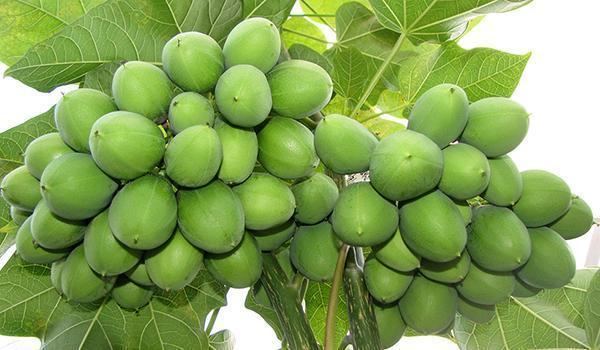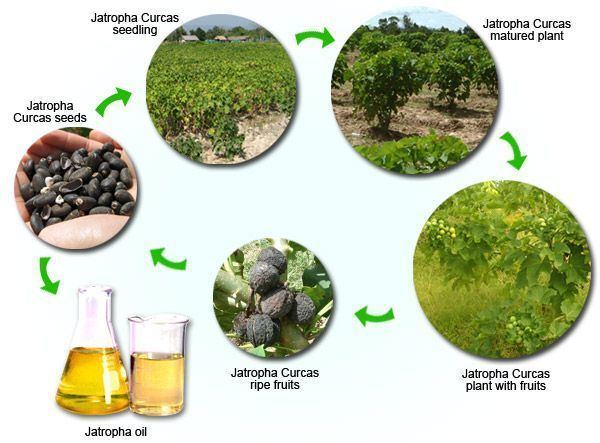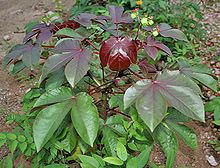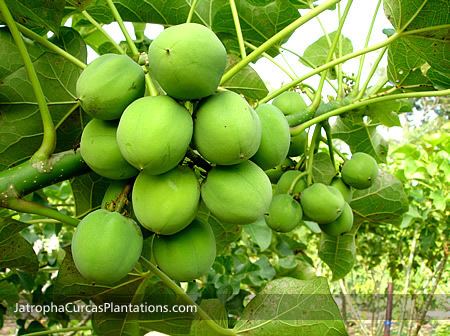Scientific name Jatropha Rank Genus | ||
 | ||
Lower classifications Jatropha curcas, Jatropha podagrica, Jatropha integerrima, Coralbush, Jatropha unicostata | ||
Jatropha curcas hope for future biodiesel production
Jatropha is a genus of flowering plants in the spurge family, Euphorbiaceae. The name is derived from the Greek words ἰατρός (iatros), meaning "physician", and τροφή (trophe), meaning "nutrition", hence the common name physic nut. Another common name is nettlespurge. It contains approximately 170 species of succulent plants, shrubs and trees (some are deciduous, like Jatropha curcas). Most of these are native to the Americas, with 66 species found in the Old World. Plants produce separate male and female flowers. As with many members of the family Euphorbiaceae, Jatropha contains compounds that are highly toxic. Jatropha species have traditionally been used in basketmaking, tanning and dye production. In the 2000s, one species, Jatropha curcas, generated interest as an oil crop for biodiesel production.
Contents
- Jatropha curcas hope for future biodiesel production
- Jatropha plantation road side allahabad
- Uses
- Toxicity
- Selected species
- Formerly placed here
- Synonyms
- References

Jatropha plantation road side allahabad
Uses

The stems of haat (Jatropha cuneata) are used for basketmaking by the Seri people in Sonora, Mexico. The stems are roasted, split and soaked through an elaborate process. The reddish dye that is often used is made from the root of another plant species, Krameria grayi. Spicy jatropha (J. integerrima) is cultivated as an ornamental in the tropics for its continuously blooming crimson flowers. Buddha belly plant (J. podagrica) was used to tan leather and produce a red dye in Mexico and the southwestern United States. It is also used as a house plant.

The oil from Jatropha curcas is mainly converted into biodiesel for use in diesel engines. The cake can be used for fish or animal feed (if detoxified), biomass feedstock to power electricity plants, or as biogas or high-quality organic fertilizer. In 2007, Goldman Sachs cited Jatropha curcas as one of the best candidates for future biodiesel production. It is resistant to drought and pests, and produces seeds containing 27-40% oil, averaging 34.4%. The remaining press cake of jatropha seeds after oil extraction could also be considered for energy production. However, despite their abundance and use as oil and reclamation plants, none of the Jatropha species have been properly domesticated and, as a result, their productivity is variable, and the long-term impact of their large-scale use on soil quality and the environment is unknown. 2009 research found that Jatropha biodiesel production requires significantly more water than other common biofuel crops, and that initial yield estimates were high.
Jatropha curcas is also being studied for use as a Carbon sequestration plant in arid regions.
Toxicity
Much like other members of the family Euphorbiaceae, members of the genus Jatropha contain several toxic compounds. The seeds of Jatropha curcas contain the highly poisonous toxalbumin curcin, a lectin dimer. They also contain carcinogenic phorbol. Despite this, the seeds are occasionally eaten after roasting, which reduces some of the toxicity. Its sap is a skin irritant, and ingesting as few as three untreated seeds can be fatal to humans. In 2005 Western Australia banned Jatropha gossypiifolia as invasive and highly toxic to people and animals. Even though it was used as medicine in certain geographic region it was found to have no antimicrobial activity.
